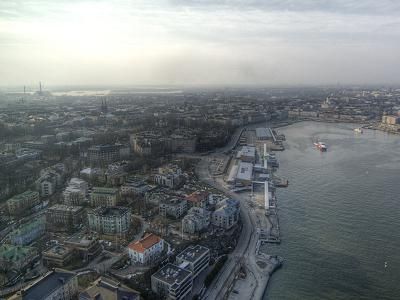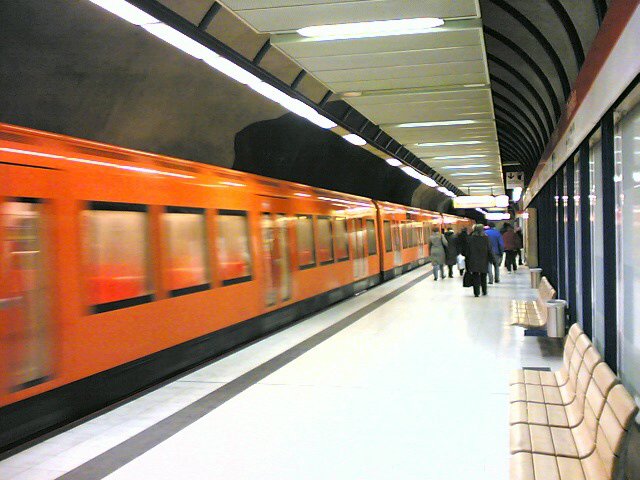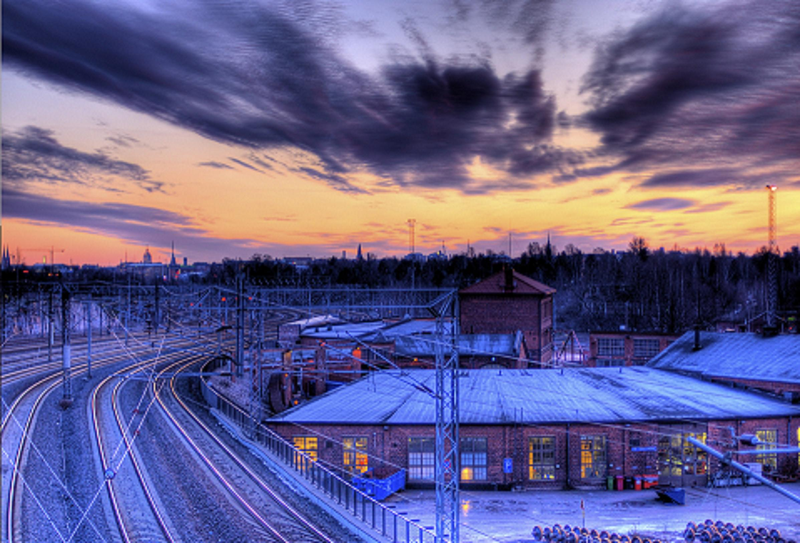Finland – creating a low-carbon country
The Finnish climate and situation pose many challenges to energy saving and mitigation measures. In spite of cold winters and traditionally energy-intensive industries, the country has made impressive strides towards meeting its medium-term commitments, and is planning the roadmap to 2050 and beyond.

The Finnish attitude towards nature is eloquently captured in the country’s national poems. As implied in the Kalevala, the Finnish national epic, life itself is preserved in the elements of nature. We must not take nature as given or for granted, but as people, we have to sustain nature’s diversity so that our children’s children can fully enjoy nature as it stands. As asserted in the Kalevala, nature supports life, but our way of living needs to support nature as well.
The fight against the long-term destructive effects of climate change is among the greatest challenges of our time, not simply because of the future uncertainties climate change creates, but also the great power nature can wield to severely aggravate other global challenges. Therefore, climate change requires people who have the power to influence the future to take scientific evidence seriously and be less influenced by short-term considerations.
Finland has carefully built clean technology knowledge that will lead the way in transforming the country. Flagship policies, which include a preparatory Climate Act and a Long-Term Roadmap, will lead Finland towards a carbon neutral society. This is Finland in the making.
Finnish facts
Finland is in the frontline in mitigating CO2 emissions. With the help of innovative technological solutions and well-defined public policies, Finland will become a low-carbon society by 2050. This is no easy task, as everyone now realises.
Great challenges are caused by our environmental and societal characteristics. The northern location and cold climate, long distances in a large and sparsely inhabited land, and the energy-intensive basic industry all bring about additional problems that need to be addressed.
Winter temperatures have an important impact on emissions; mild weather has a decreasing effect, whereas long and cold winter periods increase emissions since the need for indoor heating is high. The Finnish people hold their climate very dear, but it poses a powerful challenge to energy saving and mitigation measures.
"With the help of innovative technological solutions and well-defined public policies, Finland will become a low-carbon society by 2050"
In addition, annual greenhouse gas emissions in Finland have always been subject to extreme fluctuations, mainly due to variations in the availability of hydro power in the Nordic electricity market, imports of electricity, the level of energy intensive industrial activity, and the annual structure and volume of domestic energy production. These challenges compel us to be creative and come up with new solutions to reach greater energy efficiency.
Despite our rough weather conditions and fluctuating emissions, Finland is the top rank in many energy saving and efficiency measures, and has done well in mitigating greenhouse gas emissions. In 2011 Finland’s greenhouse gas emissions fell below the commitment level of the Kyoto Protocol by 6 per cent. Preliminary data from 2012 indicates that Finland’s total greenhouse gas emissions will amount to 61.4 million tonnes of carbon dioxide equivalent. The good news is that this shows a decrease of about 8 per cent, or six million tonnes, compared with the previous year.
The most significant source of greenhouse gas emissions in Finland is the energy sector, with an 81 per cent share of the total emissions in 2010. The energy sector’s emissions have decreased by some 9 per cent, mainly because of decreased consumption of coal and peat, and increased net imports of electricity.
In 2012 emissions under the EU Emissions Trading System (ETS) decreased by 16 per cent, but the progress outside the trading scheme has been less encouraging. Yet in overall terms, greenhouse gas emissions without land use, land use changes and forestry (LULUCF) in Finland are at their lowest since 1990. In spite of past and recent success, Finland’s national mitigation measures will become still more ambitious in future years.
Low carbon strategies and targets
Finland’s Long-Term Climate and Energy Strategy sets national policies for emission mitigation, amount of renewable energy sources, energy efficiency goals and levels for self-sufficiency in electricity procurement. The latest strategy update was approved by the Finnish Government on 20 March 2013. The strategy is also a tool for implementing the EU’s climate and energy package for 2020. Lastly, the strategy prepares Finland for its future energy and climate targets.
 Finland’s prime targets for 2020 comprise a 38 per cent share of renewable energy sources in final energy consumption, a reduction of emissions outside the ETS by 16 per cent, and a 34 per cent reduction within the ETS compared with 2005. In addition, Finland has decided to set a 20 per cent national target for renewable energy sources in road transport fuels. Sector-specific targets for energy efficiency or emission reduction are set for energy production, industry, transport (pictured left) and buildings. According to the latest strategy update, Finland is well on track to achieve these mitigation targets by 2020.
Finland’s prime targets for 2020 comprise a 38 per cent share of renewable energy sources in final energy consumption, a reduction of emissions outside the ETS by 16 per cent, and a 34 per cent reduction within the ETS compared with 2005. In addition, Finland has decided to set a 20 per cent national target for renewable energy sources in road transport fuels. Sector-specific targets for energy efficiency or emission reduction are set for energy production, industry, transport (pictured left) and buildings. According to the latest strategy update, Finland is well on track to achieve these mitigation targets by 2020.
It is emphasised in the government programme that Finland’s long-term goal is to become a carbon neutral society by 2050. This will be achieved by following the strategy laid out in the Foresight Report on Long-term Climate and Energy Policy by increasing energy efficiency and enhancing the use of renewable energy sources.
The work towards 2050 has genuinely started in 2013, as the parliamentary committee on energy and climate has begun planning the long-term roadmap. The roadmap will review means and costs of constructing a low-carbon society and mitigating emissions by 80-95 per cent by 2050 compared with 1990. Furthermore, Finland’s domestic climate policy will be reviewed in comparison with European and international frameworks; and in addition, the competitiveness of a low-carbon society will be assessed in the process. The committee is committed to delivering its proposal in 2014, paving the way to a low-carbon Finland.
The forthcoming National Climate Act
The Finnish Government is currently preparing a National Climate Act. Led by the Ministry of the Environment, the preparatory work is advancing so that the Act can be promulgated after the next Finnish parliamentary elections in April 2015.
"The Finnish parliament would be granted an increased role in advancing climate policy"
In its present form, the Act would function as a simple planning and monitoring system for future governments, and it would direct administrative action in reducing non-ETS emissions. In the Act, the division of labour between authorities would be clarified and the Finnish parliament would be granted an increased role in advancing climate policy. Furthermore, the Act would cover climate change adaptation measures.
The Act does not set new emission reduction targets, since these targets are already included in national strategies. Therefore the value that the Act brings to Finnish climate policy is that it clarifies and stabilises long-term climate policy planning and monitoring, increases transparency of political decision-making, increases citizens’ access to information and creates better opportunities for participation.
It increases legal certainty for citizens and businesses by making climate policy more predictable, and improves Finland’s chances of working together with other EU countries to promote climate mitigation objectives in international and transnational contexts. The Climate Act will constitute the structure for evaluating sound governmental climate policy.
Individual sectors
Finland’s other important policies and measures include energy efficiency targets, regional climate efforts and other public measures for making Finland a cleantech-friendly business environment. In the updated National Energy and Climate Strategy, reassessed measures are set for 2020, improving energy efficiency and stabilising final energy consumption to 310 TWh.
Sector-wise measures are crucial in achieving energy efficiency targets. For example, the built environment plays a distinctive role in this process. An energy-smart built environment is an energy-efficient, low-emission, high quality built environment, which employs all necessary means to mitigate climate change. Many factors contribute to energy smartness; for example, land use, construction and renovation, ownership and use of real estate, as well as utilisation of renewable energy. Due to high building standards and state-of-the-art engineering, Finland is striving to achieve the 2020 sector targets as early as 2017.
In transport, the opportunities for improved energy efficiency are great. Road transport measures, such as energy subsidies to improve energy efficiency of public transport and incentives for the acquisition of vehicles that are more energy-efficient, are assessed in the national intelligent transport strategy.
The HINKU municipalities
The so-called HINKU municipalities (HINKU implies ‘towards a carbon-neutral municipality’) are at the forefront of regional climate efforts in Finland. The HINKU project was launched in 2008 in five municipalities and has steadily gained new members, amounting to ten in 2013. The HINKU members are committed to reducing emissions by 80 per cent by 2030 compared with 2007.
Thus far the project has delivered encouragingresults. Municipal authorities, business representatives, local residents, research institutes and experts have all been working together to devise new cost-effective solutions to reduce emissions, especially in transport, housing and agriculture. In five years the original five HINKU municipalities have reduced their emissions by 12-18 per cent by replacing fossil fuels with renewables and by curbing the use of electricity with more efficient domestic appliances. Apart from environmental advantages, the municipalities have created new jobs and gained economic benefits.
In Finland, the entire production and service chain, in cooperation with the public sector, will be encouraged to create and adopt climate-friendly solutions and technological innovations. For example, Finland’s cleantech expertise will be strengthened by directing public procurement and developing risk financing instruments, while municipalities will be selected as pioneers. Policies that endeavour to lessen the use of private cars, such as land use planning, public transport and new bicycling opportunities, will be advanced.
A land of green economy and innovations
These efforts and policies, which are at the heart of a green economy, will provide a framework for sustainable economic growth and better living conditions for Finnish people. Furthermore they guarantee long-term sustainability and solidify social cohesion – all this while respecting and preserving the environment.
"International climate regulation has now been statistically proved to be a friend of Finnish industry"
This could be called the beginning of a third industrial revolution – the green revolution. Finland has a lot to offer. The cleantech sector is already growing at a fast rate thanks to advanced energy efficiency, water management and bioenergy technologies, as well as know-how in combined electricity and heat production. The economic outlook of the cleantech sector is spectacular, especially for small and medium-sized companies, and the annual growth rate of this sector has already passed that of some traditional Finnish industries. In addition, the public sector aspires to develop cleantech even further; over one-third of Finnish public research and development investments are made in environmentally-sensitive industries.
International climate regulation has now been statistically proved to be a friend of Finnish industry. There is great potential in the current negotiations – potential that could secure an economically sound outlook that respects the environment. For Finland, ‘environmentally friendly’ is the path to the future.





_-_frame_at_0m5s_400_250_80_s_c1.jpg)



